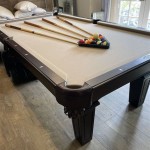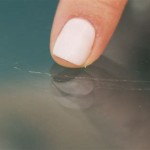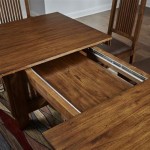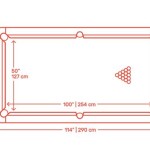Table Tennis Standard Board: Dimensions, Materials, and Performance
The table tennis board, more formally known as the table tennis table, is the central piece of equipment in the sport. Adherence to specific standards regarding its dimensions, materials, and playing surface characteristics is paramount for fair play and consistent game conditions across different settings, from casual recreation to professional tournaments. These standards are meticulously defined by the International Table Tennis Federation (ITTF) and serve as the benchmark for table manufacturers worldwide. Understanding these specifications is crucial for players, coaches, and organizers alike to ensure an optimal and regulation-compliant playing environment.
The ITTF's stringent regulations aim to guarantee uniformity in table tennis surfaces and conditions across the globe. This standardization eliminates any potential advantage derived from variations in table design or material. The focus is on creating a level playing field where skill, strategy, and athletic ability are the determining factors for success, rather than the characteristics of the table itself. These standards cover various aspects, including the dimensions of the table, the materials used in its construction, the color and reflectivity of the playing surface, its frictional properties, and its response to the impact of the ball.
Dimensions and Physical Properties
The official dimensions of a standard table tennis table are precisely defined. The length of the table must be 274 centimeters (9 feet), the width must be 152.5 centimeters (5 feet), and the height above the floor must be 76 centimeters (2.5 feet). These dimensions are non-negotiable and must be strictly adhered to for competition play. Any deviation from these measurements could compromise the integrity of the game.
The construction of the table typically involves a composite wood material, primarily medium-density fiberboard (MDF) or particleboard. The thickness of the tabletop is a critical factor in determining its playing characteristics. While there isn't a mandatory thickness specified by the ITTF, a thickness of at least 16mm is commonly found in recreational tables, while tournament-grade tables generally boast a thickness of 19mm to 25mm or more. A thicker tabletop typically provides a more consistent and predictable ball bounce, as it reduces vibration and minimizes any dead spots on the surface.
The table must be supported by a sturdy frame and legs, ensuring stability and preventing any unwanted movement during play. The legs are typically made of metal or wood and should be adjustable in height to compensate for any unevenness in the floor surface. This adjustability is essential for maintaining a perfectly horizontal playing surface, as even slight variations in height can affect the trajectory and bounce of the ball.
Furthermore, the table must be capable of withstanding the rigors of regular use. The surface should be resistant to scratches, dents, and other forms of damage that could affect the playing characteristics. The paint or coating applied to the surface must also be durable and resistant to fading or chipping.
Surface Characteristics: Color, Finish, and Friction
The color and finish of the tabletop are also precisely regulated. The surface must be uniformly dark in color, typically dark green or dark blue. These colors are chosen to provide optimal contrast with the white or orange color of the table tennis ball, making it easier for players to track the ball's movement and spin. The surface must be matte or have a low-gloss finish to minimize glare and reflections that could distract players. Furthermore, the surface must be uniform in color and free from any noticeable variations or blemishes that could affect the ball's trajectory.
The friction coefficient of the table surface is another important consideration. This refers to the amount of grip or resistance the surface offers to the ball. The ITTF does not specify a precise numerical value for the friction coefficient, but it dictates that the surface must provide adequate grip to allow players to impart spin on the ball. A surface that is too slippery will make it difficult to generate spin, while a surface that is too sticky will hinder the ball's movement and prevent it from bouncing properly.
The surface finish plays a crucial role in achieving the desired friction characteristics. The finish should be smooth and even, without any imperfections or irregularities that could affect the ball's spin or bounce. The application of the paint or coating must be done carefully to ensure a consistent and uniform surface texture.
The white lines marking the boundaries of the playing surface are also subject to specific regulations. The lines must be 2 centimeters wide and clearly visible against the dark background of the table. The side lines run along the length of the table, while the end lines run along its width. These lines define the legal playing area and are used to determine whether a ball is "in" or "out".
Ball Bounce and Uniformity Standards
The uniformity of the ball bounce is a crucial aspect of table tennis table standards. When a standard table tennis ball is dropped from a height of 30 centimeters (approximately 11.8 inches) onto the table, it must bounce up to a height of approximately 23 centimeters (approximately 9 inches). This bounce height is a key indicator of the table's playing characteristics and its ability to provide a consistent and predictable ball response.
The uniformity of the ball bounce is essential for fair play, as it ensures that the ball behaves consistently across the entire playing surface. This eliminates any potential advantage that could be gained from variations in bounce height at different locations on the table. To ensure uniformity, the table manufacturer must carefully control the materials used in the table's construction, the thickness of the tabletop, and the application of the surface finish.
The ITTF has established rigorous testing procedures to evaluate the bounce characteristics of table tennis tables. These tests involve dropping a standard ball from a specified height at various locations on the table and measuring the resulting bounce height. The results are then analyzed to determine whether the table meets the ITTF's uniformity standards.
In addition to the bounce height, the consistency of the ball's spin response is also an important factor. The table surface should allow players to generate spin effectively, and the spin characteristics should be consistent across the entire playing surface. This requires a surface that provides adequate grip and friction, as well as a uniform finish that is free from any imperfections or irregularities. Maintaining these standards consistently requires specialized manufacturing processes and quality control measures.
Deviations from standard bounce height or spin response can dramatically alter the game, favoring certain playing styles or strategies. For example, a table with a lower-than-standard bounce might favor players who rely on short, quick shots, while a table with a higher-than-standard bounce might favor players who prefer to play further from the table and use more powerful strokes. Differences in spin response could unfairly affect players who rely heavily on spin variations in their service and rallies.

Table Tennis Dlgsc

Table Tennis Scientific Diagram

Lastest Standard Table Tennis Board In Port Harcourt Sports Equipment Holloway Enterprise Jiji Ng

Standard Indoor Table Tennis Board Konga Ping

Standard Indoor Table Tennis Board With Cover And Complete Accessories Konga Ping

Table Tennis Measurements Size And Dimensions Cornilleau

International 12mm Mdf Board Pingpong Table Standard Size Tennis Tables For Indoor Sport China And Made In Com

Joola Outdoor Waterproof Table Tennis Standard Sports

Wood Table Tennis Size Standard Board Thickness Type 25 Mm At Rs 21000 Piece In Delhi

Table Tennis Board Onigbinde S








